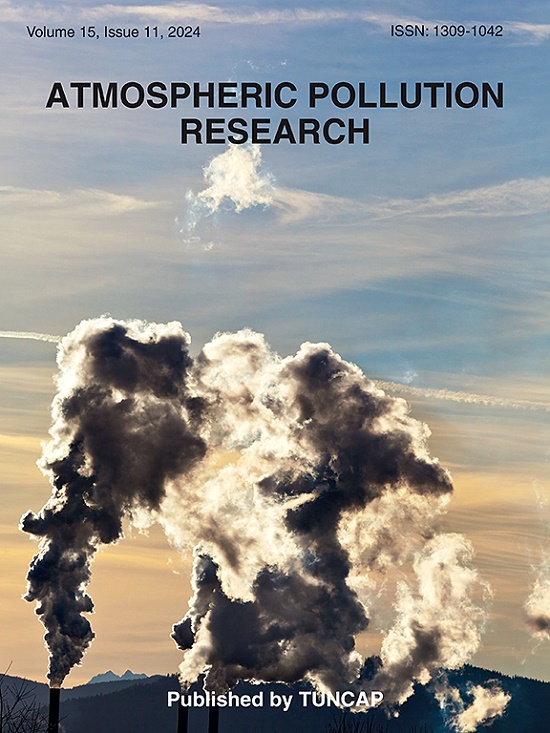Spatiotemporal features and optical properties of aerosols in the Ili Basin: A CALIPSO-based analysis (2008–2022)
IF 3.9
3区 环境科学与生态学
Q2 ENVIRONMENTAL SCIENCES
引用次数: 0
Abstract
Aerosols such as dust exhibit strong light-absorption properties. The Ili Basin (IB) has become an important deposition area for aerosols owing to its distinctive geographic location and the influence of westerly winds. In this study, we investigated the spatiotemporal features and optical properties of aerosols in the IB using Cloud–Aerosol Lidar and Infrared Pathfinder Satellite Observations (CALIPSO) data from 2008 to 2022. The results indicated that there were six aerosol subtypes in the IB, of which dust and polluted dust (PD) were the dominant aerosol subtypes, accounting for over 83% of the aerosols in this region. The frequency of dust was highest in spring, and that of PD was highest in summer. Spatially, dust occurred primarily in the southwest, central, and eastern regions, whereas PD occurred primarily in the central and northwest regions. Aerosols were mainly distributed below 10 km, peaking at 3–4 km. The height of the dust layer was greater than 4 km in most parts of the IB, with the highest values in the southwest and east. The distribution of the PD layer was lower than that of the dust layer. The extinction coefficients, particulate depolarization ratios, and backscatter coefficients were higher in the eastern part of the IB. This study suggests that future research should focus on the mountainous areas in the southern and eastern parts of the IB to clarify the deposition of absorptive aerosols and their effect on snow ablation.
求助全文
约1分钟内获得全文
求助全文
来源期刊

Atmospheric Pollution Research
ENVIRONMENTAL SCIENCES-
CiteScore
8.30
自引率
6.70%
发文量
256
审稿时长
36 days
期刊介绍:
Atmospheric Pollution Research (APR) is an international journal designed for the publication of articles on air pollution. Papers should present novel experimental results, theory and modeling of air pollution on local, regional, or global scales. Areas covered are research on inorganic, organic, and persistent organic air pollutants, air quality monitoring, air quality management, atmospheric dispersion and transport, air-surface (soil, water, and vegetation) exchange of pollutants, dry and wet deposition, indoor air quality, exposure assessment, health effects, satellite measurements, natural emissions, atmospheric chemistry, greenhouse gases, and effects on climate change.
 求助内容:
求助内容: 应助结果提醒方式:
应助结果提醒方式:


